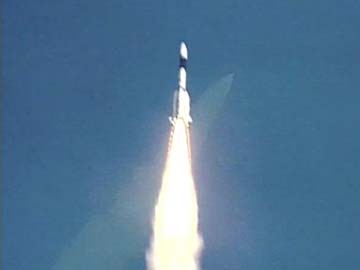
The launch of cryogenic engine based rocket has once again proved India's capability of developing complex technologies.
Indian Space Research Organisation (ISRO) successfully launched the Geo Synchronous Launch Vehicle D-5 (GSLV) on Sunday and placed the communication satellite GSAT-14 in the earth's transfer orbit.
It took ISRO 20 years to make the technology work, a feat in itself. "Cryogenic technology is quite complex and only a few in the world have mastered it," The Economic Times quoted K Radhakrishnan, Chairman of ISRO.
Even though ISRO had mastered the Polar Satellite Launch Vehicle technology, it was perplexed by the failures of the GSLVs. The first and second stages of the rocket are similar to that of the PSLV. ISRO has successfully launched 25 PSLVs in the past. However, PSLV can launch only smaller satellites weighing up to one tonne.
On the other hand, the record for GSLV is very low; four excluding the GSLV D-5. These four launches used Russian cryogenic engine. A refusal from Russia to further provide the engines forced the ISRO scientists to initiate an indigenous development of the cryogenic technology. But the faulty critical components developed by the Indian makers delayed the programme.
ISRO finally began a thorough review of the GSLV programme in 2011 following the second failure to launch the cryogenic stage based rocket in December 2010.
The crucial point of this technology is the use of liquid oxygen at -253 degree Celsius and liquid hydrogen at -183 degree Celsius to develop the powerful thrust needed to propel the rocket in final stage of placing the heavier satellites into the orbit. GSLV can launch medium sized satellites weighing up to five tonnes. During the last two unsuccessful launches, leakage at this stage has been the cause for failure.
"The 1,000 seconds of the GSLV flight was achieved with 1,000 days of dedicated work," said K Sivan, GSLV mission director added. GSLV-D5 carrying GSAT-14 was launched very precisely to its intended geosynchronous transfer orbit.
ISRO will now be able to move ahead with their plans to launch medium sized satellites weighing between 3-5 tonnes at less than half the cost. The space organisation has plans to launch GSAT-6, 6A, 7A and GSAT 9, two geostationary information satellites for remote sensing, and a few more communication satellites. If a launch at Arianespace cost ISRO ₹500 crore, similar launch in Sriharikota will now cost ₹200 crore asserted ISRO scientists.
The success has also given boost to GSLV Mk-III, which is under development. This launch vehicle is expected to launch very heavy satellites of up to 10 tonnes. "It is a tough job to understand and master cryogenic technology. It is ultimate and we have put in a lot of efforts and made it possible. Today, we can say and prepare with more confidence for the next mission of C-25 stage with 25 tonnes of propellant and 20 tonnes of cryogenic engine thrust for the GSLV MK-3 D-1 mission in early 2017. The high-end cryogenic engine is slated for completion and testing by 2015," The Times of India quoted S Ramakrishnan, Director of Vikram Sarabhai Space Centre in Sriharikota.
India now joins the nations who have mastered the cryogenic technology are: the US, Russia, Europe, China, and Japan.

















